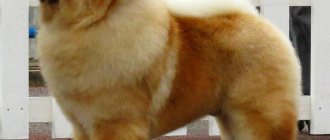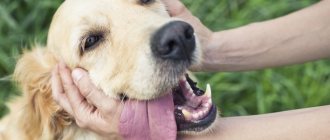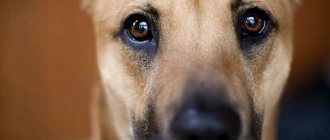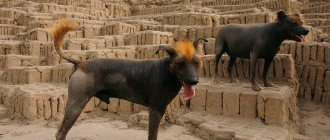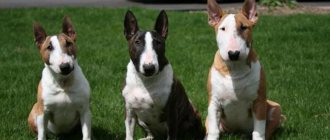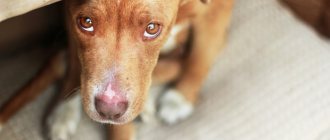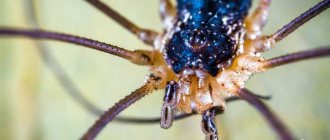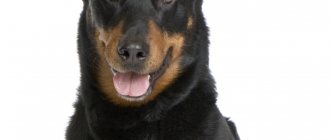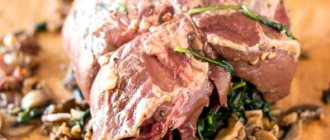Which country has no stray dogs? How did the Romans treat their dogs? How many dogs in the world roam freely rather than live with their owners? What is the relationship between dogs and skunks? Read interesting facts about dogs! Read the first part of the collection here.
Photo: Emile Kerss/Pixabay
There are no stray dogs in the Netherlands
As a result of government measures codenamed PSVIR (trapping, sterilization, vaccination, identification and return), by 2016 the Netherlands managed to completely get rid of the phenomenon of street dogs. Owners were found for all animals, or they were sterilized and placed in nurseries, where they are provided with care and comfort.
Photo: HAROLDPH / Pixabay
Origin: wolves are descendants of dogs
Scientists are still arguing about who the dog's ancestor was. Two theories emerged from this debate:
- Monophyletic, which states that the ancestor of dogs is a single species.
- Polyphyletic, which holds the view that dogs evolved from different ancestors.
Advances in genetics now suggest that dogs are descendants of a single wolf-like ancestor. As a result of divergence of characteristics due to changes in living conditions, this species of “proto-dog” was divided into two branches: dogs and modern wolves. What significant facts are cited by scientists in favor of this theory:
- the number of chromosomes in both dogs and wolves is 78, while jackals have a different set of chromosomes;
- It is assumed that the habitat of the extinct ancestors of dogs and wolves were territories in Europe, northern Africa, Asia, and North America, which explains the most ancient finds of dog remains in these regions. They were introduced to other parts of the planet later.
The supposed ancestors of dogs are wolves and jackals. This is exactly the hypothesis that was put forward by Konrad Lorenz, an Austrian ethologist who, after many years of observing dogs, wolves and jackals, noted the similarity of behavior and habits.
Archaeologists find the remains of dogs in human settlements, and such finds date back to the Stone Age. The ancestors of dogs lived next door to people, ate their waste, which made it possible to train and domesticate them.
It is noteworthy that the remains were found not in one place, but in different parts of the Earth: in the territory of modern Denmark, England, Sweden, Belgium, Egypt, Iran and the US state of Idaho. And they all date back to approximately the Stone Age, when people were not yet engaged in cattle breeding and agriculture, but obtained their own food by hunting wild animals. The need for certain qualities in dogs has arisen due to changes in people's lifestyles. When they switched to a settled life and began to engage in agriculture and cattle breeding, dogs were required to be able to hunt, protect homes, transport heavy loads, and for military purposes. This is what prompted man to purposeful work on breeding breeds.
Interesting! In the classification of wild animals there is no concept of “breed”. There are about 400 breeds in the modern world. Among them there are breeds, the number of individuals in which is huge and distributed throughout the world, for example, the German shepherd. And some breeds are known only in the country where they were bred and are very narrowly distributed, for example, Norbettenhud in Norway.
Vilna and Kaplya
The space dogs Belka and Strelka received these names only six days before the flight. Before that, Belka was Vilna, and Strelka was Kapleya, and even earlier, either Silva or Martian. This data was found in the archival notebook of Oleg Gazenko, who supervised the physiological training of these and many other dogs in the Soviet space program.
Vilna and Kaplya
Groups of dog breeds: division according to genetic and functional properties
The most recognized classification is the FCI - International Canine Federation, according to which there are 10 groups of breeds, including shepherds, pinschers, schnauzers, terriers, hounds, spaniels and others.
No less common is the classification according to the intended use of breeds. According to it, hunting and non-hunting groups are distinguished.
- Hunting breeds are dogs whose main purpose is to help a person during a hunt. This group includes pointers, retrievers, hounds, dachshunds, terriers, greyhounds, and spaniels. The birthplace of most breeds of hunting dogs is England.
- Non-hunting dog breeds are a diverse group that includes decorative dogs, fighting dogs, sled dogs, herding dogs, Molossians and bulldogs.
How did the breeds originate?
All representatives of the breeds arose from a wolf-like animal 12,000-15,000 years ago, they
are relatives of wolves, jackals, koyts and belong together with them to the canine family. Their similarity is evidenced by the fact that dogs can interbreed with representatives of the species of wolves or jackals and bear offspring.
The dog is the first animal domesticated by man. Why it became possible to habituate the “ancient wolf”, scientists are still arguing. It is assumed that the animals were attracted by the opportunity to receive food from humans. The large amount of waste around human settlements also kept wolves close to humans. Another domestication scenario supports the hypothesis that the initiative for domestication lies with humans.
An interesting fact is that, judging by archaeological finds, dogs were eaten as food, and skin and bones were also used in everyday life. The same finds allow us to assert that dogs appeared in Southeast Asia about 15,000 years ago, while in the western part of Russia and Europe during this period there were dogs with diverging characteristics from wolves.
Differences in the appearance of dogs are not only the result of human intervention, but also the climate and geographical location of the place where the dog was domesticated.
Research into dog DNA by geneticists shows the genetic diversity of modern dogs. This means that they came from different gene pools, that is, domestication is a practice that does not come from one geographical point. Multiple and independent domestications occurred in different places around the globe and at different times.
Dogs intended to achieve highly specialized goals were bred artificially. For example, dachshunds were bred to work and search for game in holes and underground, and Dobermans are the result of work on many breeds: Rottweilers, German pinschers, pointers in order to obtain an obedient dog with a developed guarding instinct.
Dog care: basic nuances
Proper care and maintenance of dogs should be based on “three pillars”: hygiene, nutrition and exercise. These requirements are a guarantee that the dog will be healthy itself and safe for others. Caring for dogs has several goals:
- satisfying her primary needs, as well as the needs for exercise, both physical and mental;
- formation of controllability and obedience of the dog;
- The dog must learn to understand its place in the family where it lives.
How to care for a dog, what items are required in care?
- A daily walk, which allows the animal to breathe fresh air and relieve its natural needs, promotes physical development. The number of walks with a dog depends on age: it is recommended to walk puppies at least 3 times a day, and adults - 2 or 3 times. The owners decide how long the walk will last depending on the age, breed and characteristics of the dog. If nothing bothers the dog, it is healthy and the weather conditions are favorable outside, then the optimal duration of walks is 1.5-2 hours.
With regular walking, a healthy dog kept in an apartment gets used to fulfilling the need to go to the toilet during walks twice a day.
- Dog hygiene. It is necessary for the health of the dog, to maintain cleanliness in the house where it lives. Regular vaccinations, caring for coat and teeth, paying attention to the ears and paws, protecting the skin from parasites - this is a list of procedures that are necessary for a dog’s hygiene.
Interesting! Dog owners often notice how their pets' paws smell like chips or popcorn. This is due to insufficient paw hygiene and the possible development of fungi there.
- Nutrition. A balanced combination of fats, proteins and carbohydrates in a dog’s diet is the key to its health, activity and good mood. The owners practice two types of feeding: using industrially produced food and home-prepared food.
Natural nutrition requires owners to pay special attention to the animal’s food:
- it must be of high quality and take into account the dog’s digestive characteristics;
- balanced nutrients, uniform consistency, absence of small bones are the main signs of properly prepared food;
- the diet should be varied and include amino acids, cottage cheese, lactic acid products, eggs;
Ready-made commercial feeds are divided into several categories: economy, premium, super-premium. Depending on the category, a decision is made on whether it is necessary to additionally feed the animal:
- Cheap feeds are made based on plant components: corn, wheat, soy. The lack of animal protein in them obliges dog owners to additionally give them meat and vitamin-mineral complexes;
- Feeds from the premium category are characterized by higher digestibility. They contain proteins obtained from turkey, chicken, and lamb meat; the plant component is most often rice;
- Super-premium food is produced taking into account the developmental characteristics of the dog: its activity, weight, age. This is the only food option when no additional feeding is required, because it is perfectly balanced and has increased nutritional value.
Features of feeding dogs
- The period of active growth of puppies is the time when
It is necessary to include foods rich in calcium and protein in the diet. - If the puppy's mother does not have enough milk, then it is advisable to start feeding it with cow's milk. After the puppy learns to eat on its own, it is necessary to include minced meat in its diet, gradually increasing the portion to 100 grams by the age of one month.
- Feeding frequency: from 3 to 8 months - 4 times a day in small portions, then up to 12 months - 3 times, after 1 year - 2 times a day. The serving size depends on the breed, age and weight of the animal.
- Clean drinking water should be available to dogs throughout the day.
- If dogs are diagnosed with digestive enzyme deficiency, it can be corrected with the help of probiotics.
Physical activity: what should it be?
If a dog damages furniture, walls and things in the house, then this is direct evidence that it lacks physical activity. Frisbee dog training and agility elements during walks are mandatory to satisfy the need for physical activity and help maintain physical fitness.
Interesting! People who have dogs move 66 more than others who don't have a pet.
Baby dog - puppy: development and features
A puppy is not only a baby dog, but also all representatives of the canine and mustelid families.
For dogs, childhood lasts up to 9 months. Puppies are characterized by immaturity, and immaturity primarily affects the nervous system. This is a sign of a highly organized animal, since the more immature an animal is born, the more powerful its adaptation mechanism is, and it is capable of learning.
Puppies are born unadapted to life, blind, deaf and in need of mother's care. The development of puppies involves the maturation of behavioral complexes. During childhood, the puppy must solve three “tasks”:
- form connections with your own species;
- perceive a person as a social partner;
- become familiar with the features of the environment.
Puppies go through several stages in their development:
- The newborn period, or neonatal period. Its duration is up to 10-12 days.
- A transition period that lasts up to 20 days. During this time, newborn puppies turn from a helpless fetus into an independent animal. The following changes occur:
- fast growth;
- improvement of unconditioned reflexes;
- by the end of the period, puppies begin to walk, see and play;
- the first teeth appear by day 20;
- increase in brain size. The brain of a newborn puppy is only 12% of the brain of an adult dog, but after 60 days it is already 75% of the brain of an adult, and by the end of six months it is almost equal.
- Cognitive period. During the 21-28 days of their life, puppies begin to actively use their hearing and vision. During this period, it is necessary for the puppy’s mother to be with him, since a stable environment is necessary for the development of cognitive functions. Weaning from the mother can negatively affect the further physiological development of the puppy.
- Juvenile period, which begins after 3-4 months. It is also called the adolescence period, as it precedes the puppy's adulthood. This period is characterized by:
- Progression of motor activity when the puppy begins to manipulate objects during games. When unknown objects appear, the puppies' interest intensifies even more, causing increased play manipulation. The play activity developed during this period persists throughout life.
- Formation of social, group behavior. At this time, it is extremely undesirable to keep puppies in isolation, as this is fraught with the development of cowardice in them.
- Puberty, a transitional stage that begins after 7 months. At this stage, puppy growth usually stops. In a social sense, this stage is characterized by the fact that puppies begin to divide the world into friends and foes.
“The main thing is love and affection”
Animal shelter.
© Andrey Nikerichev / Moscow Agency
39-year-old PR manager Alexandra Kostina spends her free time volunteering, helping to care for and rehome dogs living in one of the shelters in the south-east of Moscow. The girl is sure that any dog will be better off with a person when there is a reliable owner nearby who will not betray. She is also sincerely confident that there are no evil pets; it is the street and human betrayal that make them aggressive.
“People throw their dogs out into the street and live with it calmly, their conscience doesn’t bother them, they don’t even want to know how hard it is for the dogs. That's why they flock together in order to survive. And they show aggression to defend themselves. They come to our shelter hungry and angry, but we try to do everything to soften them up so that they trust people again,” says Alexandra Kostina.
She believes that people are to blame for the problem of stray dogs - they played with the pet and kicked it out into the street. Therefore, in the girl’s opinion, such people should be fined and made sure that they pay for their pet’s stay in the shelter for life.
“You should see how happy our little ponytails are when you come to them, take them out for a walk, or give them some kind of treat!” They are grateful and at such moments they are truly happy. Is it possible to remain indifferent in this situation? - says Kostina.
She has two shelter dogs and four cats at home, who once lived on the streets.
Russian greyhound
Height: 70-85 cm.
Weight: 25-45 kg.
Country of origin: Russia
This hunting breed is famous for its long, silky coat. The first mention of these dogs appeared in the 17th century, when they were called Circassian greyhounds and were widely used in hunting.
At the beginning of the 19th century, the blood of English and Crimean greyhounds was added to the breed, and at the end of the century the first descriptions of the standard appeared. In those days, every rich landowner in Russia was a breeder of Russian greyhounds and had his own standard.
These dogs have excellent eyesight and hearing, they are aggressive towards animals, and can develop significant speed when running short distances. In relation to humans, the Russian Greyhound is friendly, loyal, and has a phlegmatic character.
Saint Bernard
Height: 65-90 cm.
Weight: from 70 kg.
Country of origin: Switzerland and Italy
The Saint Bernard is an ancient dog breed whose origins are unknown, most often attributed to Asian or Roman mastiffs crossed with local Alpine dogs.
According to legend, the breed was developed in the 11th century by the monk Bernard, who founded a shelter high in the Alps. Centuries later, St. Bernards began to be used to rescue travelers caught in mountain avalanches.
Saint Bernards are very strong and large dogs, distinguished by their special devotion to people and very loving children. They still work in the mountains today, rescuing those caught in an avalanche, carrying loads and serving as companions for lovers of high mountains.
Full list of big dogs:
Service
Dogs of this group are strong, hardy animals. Thanks to their intelligence, they are aware of this power and use it only when necessary. The breeds are excellent at training, remembering skills and commands for a long time. These dogs (photo presented in the article) get along well with other pets and children. In order for a dog to have a calm and balanced disposition, its methodical, systematic training begins from childhood.
The most popular representatives of this group of breeds include:
- shepherd dogs (several species);
- Rottweiler;
- Saint Bernard;
- collie;
- Doberman;
- Great Dane;
- boxer.
Dogs of these breeds are used to protect objects and people, search for gas leaks underground, search or rescue people, inspect luggage and cargo, search for weapons and drugs, and also as shepherds and guides for the blind.
The description of the rocks can be briefly summarized as follows. Representatives obey only the owner, and only his hands must train them. They are easy to train and can be cruel to enemies. They are devoted friends and protectors. The aggressiveness of these dogs can only be caused by improper upbringing (training). The specificity requires constant long-term walking and active physical activity. Representatives of the group of service breeds have an excellent sense of smell and developed intuition.
Unpleasant moments: dog diseases
Dog diseases are the subject of veterinary study. They have been fully studied, since many diseases harm not only the animal, but also the people around them. Thus, an infection such as rabies can be fatal.
Many diseases are common not only to humans, but also to dogs, for example, cancer, arthritis, diabetes, epilepsy. There are several types of diseases in dogs:
- Infectious. The “culprits” of diseases are bacteria, viruses, fungi and even parasites. Infection occurs from other dogs, but fleas, mosquitoes, and ticks can be carriers.
One of the most common viral diseases in dogs is rabies. The virus can cause inflammation of the brain and severe impairment. Asphyxia and cardiac arrest accompanying rabies cause the death of the animal.
Only strict quarantine measures and vaccination can solve problems with the spread of the rabies virus. There are no measures to treat this disease, and the sick animal must be isolated and exterminated.
Other viral diseases of dogs are infectious hepatitis, herpes, and canine distemper. Parovirus is especially dangerous, accompanied by depression, bloody diarrhea, vomiting, fever and dehydration. This gastrointestinal infection is most difficult for puppies.
- Non-communicable diseases are not infectious in nature, are associated with illness of internal organs and do not require isolation of the animal.
- Tachycardia and bradycardia are the most common diseases of the cardiovascular system. They rarely appear on their own, and are preceded by stress, infections, and poor hygiene.
- Rhinitis, laryngitis, inflammation of the bronchi and lungs, pleurisy - diseases of the respiratory system.
- Stomatitis, gastritis, cirrhosis of the liver, acute enteritis are diseases of the digestive system that make themselves felt by decreased appetite and intestinal upset.
- Cystitis, bladder spasms, nephritis are ailments of the excretory system, one of the main causes of which is poor quality and unhealthy diet, infection, and colds.
Diagnosis and treatment of these diseases can only be carried out with the participation of specialists from a veterinary clinic.
- Skin diseases are a group of dog diseases that can be transmitted from cats, goats, cows, rats and other animals that come into contact with the animal in one way or another.
You can suspect the presence of skin problems by the behavior of your pet, since the fur hides early lesions of the skin. The most common diseases that require visiting a veterinarian are eczema, dermatitis, and urticaria. Skin lesions also include ailments that are fungal in nature - lichen and scab.
About dog training
Dog training is a set of activities that help develop and form conditioned reflexes and skills. Training is based on signals that control the dog and reinforcement. Moreover, reinforcement can be negative (dissatisfied intonation, frowning eyebrows) and positive (smile, affection). Practice shows that positive manifestations of reinforcement are more effective.
The result of training is the formation of such behavior when the dog reacts to the trigger signal in a certain, desired way and reproduces the learned actions. During training, the influence of another participant in the activities is important - a person who has leadership influence. Without a strictly outlined hierarchical system, effective training is impossible.
The beginning of education and training should occur at 3-7 months, when behavioral stereotypes begin to take shape. Owners choose to train themselves or turn to trainers. There are several types recognized by the Russian school of training.
- OKD – general training course. This course is used when a controlled dog is needed. During the training process the following are used:
- obedience commands that are necessary in the city;
- special commands, for example, overcoming obstacles, fetching.
OKD is aimed at developing discipline in the dog, establishing contact with the owner, and is the basis on which further possible training for all other courses is possible.
- ZKS - protective guard service. Training using this system will allow you to get an animal that will one day save the owner’s life or property. Skills that are being developed: protecting from attack, detaining a runaway, being calm about shots, finding things with a certain smell.
- Search service. Dogs trained in this course are used to protect violators, detain them, search them, and identify a person by smell.
- Agility is how a dog can independently overcome obstacles. Body contact with the trainer is prohibited; the dog can only be controlled using gestures and voice. A type of training that dogs perceive as fun. But behind the playful nature lies the development of complete mutual understanding with a person and maximum attention, execution of commands, not paying attention to external stimuli.
Types of training used in world practice include IPO, Schutzhund, Mondioring, Obedience, and Weightpulling.
Man's true friend
Dogs are pets. Along with cats, they were domesticated many centuries ago. Domestic dogs descended from wolves. But since these predators have a ferocious disposition, they were crossed with less aggressive jackals. This is how the first breeds were developed.
At all times, the dog was considered a companion, assistant and best friend of man. At first, these animals helped people hunt and guard their homes, then they learned to herd cattle and ride in sleds. Today they serve as bodyguards and guides, track down criminals and help search for people caught in avalanches. Decorative breeds brighten up the leisure time of their owners and are considered family members.
Almost all dogs, except fighting dogs, are distinguished by their friendly disposition, good trainability, and social behavior. With proper upbringing, they recognize the owner as the leader, obey him unquestioningly, and also protect small children.
Rottweiler and living outside
How does an adult Rottweiler dog tolerate cold (-200)?
Answer 4
This breed is considered a service breed. Dogs are trainable and, with proper upbringing, become high-quality protectors. Rottweilers are characterized by a thick undercoat and can easily live outdoors. Keeping a dog in a private home is an ideal environment for a dog.
Free presence in the yard requires a high and strong fence; the gate must have a strong lock and close tightly. Fence posts should be buried deeply or the foundation should be poured. These conditions will prevent escape resulting in an attack on a stranger. The animal may mistake him for a trespasser. Constant free movement is not allowed for the security guard. You should not put a Rottweiler on a chain - this negatively affects the mental state and physical development of the pet. A tethered animal must be protected from daytime sun and rain.
An aviary is ideal for placement. An elevated, dry place is selected. This avoids dampness during rainy weather. To perform security actions, the dog requires visibility of part of the site and the gate. Dense walls are built against the winds - on three sides. The territory of the enclosure is allowed to be at least 10 sq.m. The space should have areas of shade and sun. Constant exposure to the sun is poorly tolerated by the Rottweiler. The dog loves to dig, an earthen floor is not suitable.
For winter maintenance, the concrete floor of the enclosure is covered with wooden boards. The animal can withstand twenty-degree frosts. But if the indicators are lower, it is better to move the pet into a home.
The booth is required with double walls, between which insulation is placed. Warm bedding or straw is placed at the bottom. The size of the booth is calculated based on the size of the dog - the animal must be free to fit in the room, stretch out, and roll over. A wide kennel is not suitable for living outside in winter; the Rottweiler may freeze in his sleep. The entrance is covered with a canopy. Electrical heating is allowed. It is important to protect your dog from damage to heating elements.
By providing your Rottweiler with a warm place to live, this will allow you to withstand winter frosts without risk to health.
